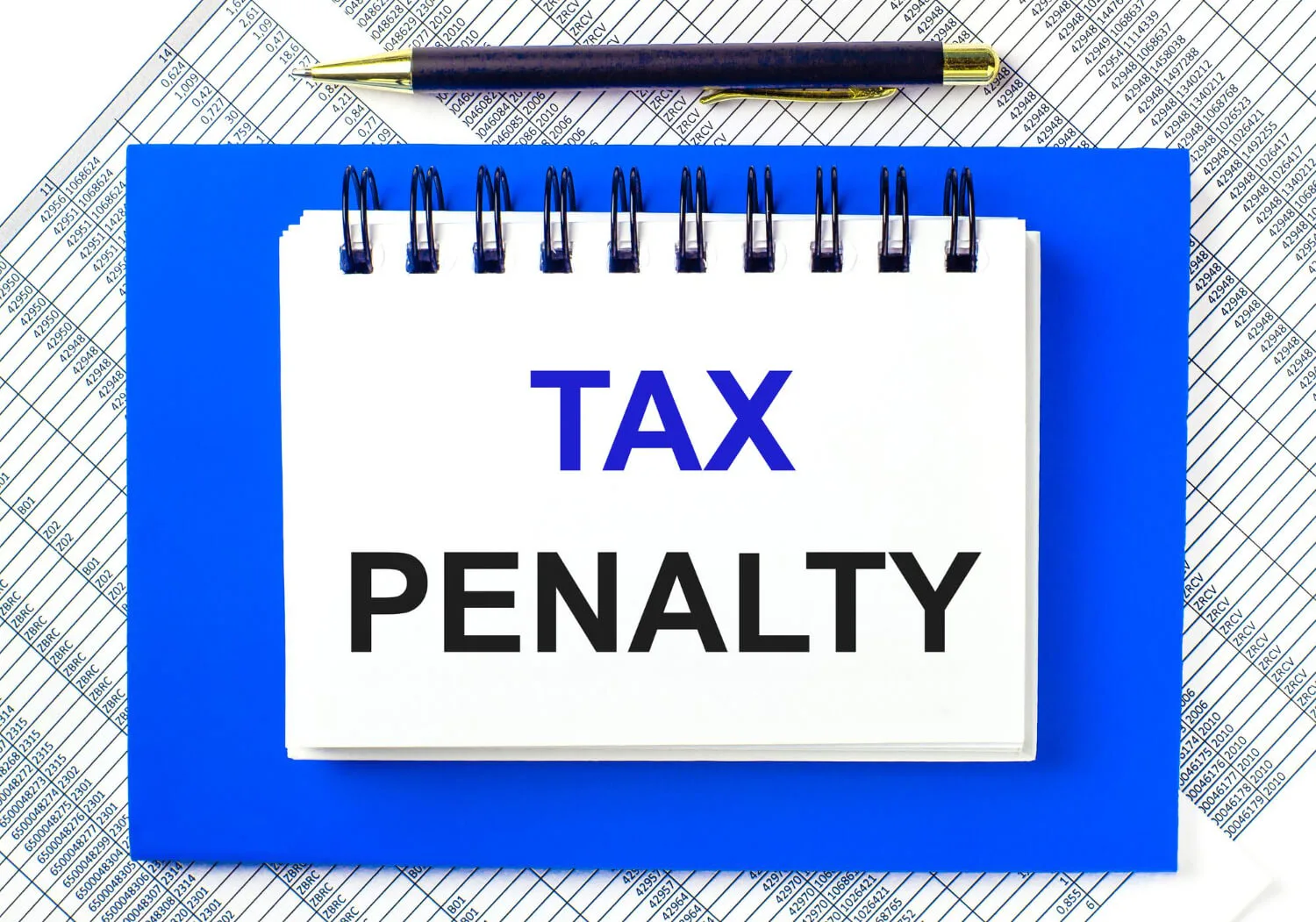Your Partner
in Legal Success
| Reading Time: 7 Minutes
What is Tax Penalty Notice?

In terms of legal nature, notices are the transactions carried out to issue the rights and requests arising from the rules of law, contract, or customary law to the addressee in written form and notify or inform. The subject of this Article is the “Tax Penalty Notice” regulated in Article 34 of the Tax Procedure Law No. 213. In the content of our Article, answers will be sought for questions such as: what is a tax penalty notice? In what circumstances is it regulated by whom? What elements should it contain? What are the administrative remedies against tax penalty notices?
The provision of Article 34 of the Tax Procedure Law with the margin title “Notification Basis” is as follows:
“Taxes levied on completion, and ex officio are notified to the relevant parties with a “notification”. A separate notice is used for taxes of different nature and origin.“
As understood from the text of the Article, a tax penalty notice is the document in which the levied taxes or related tax receivables are notified to the tax officer or taxpayer. To better understand the text of the Article, it is necessary to define the concepts of “replenishment tax” and “ex officio assessment“.
What is Replenishment Tax?
First of all, the assessment process is an administrative process that includes determining and calculating the amount of the receivables of the administration. In the Turkish Tax System, on the other hand, although the assessment process is generally made upon the taxpayer’s declaration, some different types of assessment are also regulated by law. With regard to the replenishment tax, regulated in accordance with Article 29 of the Tax Procedure Law;
“Replenishment tax assessment assesses the tax to be charged on a tax base or tax base difference, which arises after a tax is levied and whose amount is determined based on records, documents, or legal measures.“
The provision has defined the imposition. Accordingly, replenishment tax or “supplementary tax assessment”, in other words, is the taxation to be made in case the administration determines a tax base difference after the tax declared by the tax officer and the taxpayer has been assessed.
For example, suppose it is later understood that the declarations are not true or that there is a defect in the calculation in a tax assessment that has been declared and assessed. In that case, correcting these mistakes and levying the tax per the law and procedure will be possible with the supplementary tax assessment.
What is The Ex Officio Assessment?
Ex officio tax assessment is regulated in accordance with Article 30 of the Tax Procedure Law, and the relevant provision is as follows;
“Ex-officio tax assessment is the assessment of tax on the base or base portion specified in the tax assessment reports assessed by the valuation commissions or prepared by those authorized to conduct tax audits, in cases where it is not possible to determine the tax base completely or partially based on books, records, and documents or legal measures. According to this Article, the base or base difference determined in the examination report is deemed ex officio appreciated.“
Unlike a supplementary assessment, there may not be a previous assessment in the ex officio assessment. As a matter of fact, ex officio assessment will be in question in cases where it is not possible to determine the tax base completely or partially based on books, records, documents, or legal measures, unlike the full assessment. The situations where it is not possible to determine the tax base completely or partially based on books, records, documents, or legal measures are listed in the continuation of the text of the Article:
- If the tax return has not been submitted even though the legal deadline has passed,
- If the tax return is submitted within the statutory or additional deadlines, but information on the tax base is not shown in the tax return,
- If all or some of the books that are required to be kept by this law are not kept or certified, or if they are not submitted to those authorized to conduct tax inspection for any reason,
- If the need is not found correct, due to the fact that the book records and the documents related to them are incomplete, irregular, and confused in a way that does not allow the tax base to be determined accurately and precisely,
- If there is evidence that the compulsory books or the declarations given do not reflect the real situation,
- Under the repeated Article 227 of this Law, if the declaration and its annexes, which are obliged to have the members of the profession authorized according to Law No. 3568, are not signed, or if the certified public accountant certification report is not submitted on time for the subjects included in the scope of approval, an ex officio tax assessment will be applied.
What is The Communiqué of Tax Penalty Notice?
For the taxes levied by supplement or ex officio to gain legal value, they must be notified to the relevant parties with a notification. According to Article 21 of Tax Procedure Lax, notification is the written notification of the matters concerning taxation to the taxpayer or criminal officer by the competent authorities. The notification date is critical, especially in terms of litigation periods.
What is The Content of The Tax Penalty Notice?
The matters that should be included in the notification according to Article 35 of the Tax Procedure Law are stated below.
Content of the Notice: Article 35 – The notice includes the following information;
- The serial number of the notice,
- The date of issue of the notice,
- Type of tax,
- The taxpayer’s surname (title in legal entities),
- The taxpayer’s full address,
- Taxation period,
- Tax base,
- Calculation of tax,
- Amount of tax,
- In a short and clear statement, the reasons that require the tax assessment by supplement or ex officio,
- Time to file a lawsuit in tax court,
- How to file a lawsuit in tax court.
For taxes levied upon the decision of the appraisal commission, a copy of the decision and the examination report requiring ex officio discretion are attached to the notice. For notices containing penalties, the conditions listed per Article 366 of the Tax Procedure Law are as follows:
- The serial number of the notice,
- Regulation history,
- Surname, name, and title of the relevant persons,
- Taxpayer number (taxpayer account number), if any,
- Full address of the person concerned,
- Explanation of the event (by showing the Article and paragraph numbers of the law and reporting the available evidence),
- The taxation or accounting period to which the event relates,
- If any, the date and number of the notification of the tax to which the penalty is related,
- Recurrence and drinking status, if any,
- Calculation and amount of tax penalty,
- Time to file a lawsuit in tax court.
What will the legal nature of the notices that do not contain these be? In other words, will a tax penalty notice in which one or more of the elements listed is missing be capable of producing the results that are legally bound to it? The answers to these questions are given under Article 108 of the Tax Procedure Law.
Invalidity of Tax Penalty Notice
Article 108 of the Tax Procedure Law regarding this issue is as follows:
“The notified documents do not lose their legal value due to form errors that do not affect the merits; only the fact that the name of the taxpayer, the type or amount of tax, the duration of filing a lawsuit in the tax court is never written on the documents related to the tax notification, or that a competent authority has not issued these documents, invalidate the document.“
In the text of the Article, it is stated that the simple form errors in the notice that are not related to the content of the notice will not invalidate the notice. The deficiencies that will render the notice null and void are listed in the text of the Article as follows;
- The taxpayer’s name,
- The type or amount of tax,
- The period for filing a lawsuit in the tax court,
- And if a competent authority has yet to issue the notice.
Which Authority Issues The Tax Penalty Notice?
A tax penalty notice is issued by the administrations (tax offices, municipality) authorized to make tax assessments.
Statute of Limitations in Tax Penalty Notices
Pursuant to article 114 of the Tax Procedure Law, starting from the beginning of the year following the calendar year in which the tax claim arises, it has been decreed that the taxes that are not levied and not notified to the taxpayer within five years will be subject to a statute of limitations.
Which Ways Can Be Used Against a Tax Penalty Notice?
The ways that can be applied against the tax penalty notification are to appeal to the tax court within 30 days from the date of the tax penalty or to request the removal or reduction of the penalty by applying to the tax office that issued the penalty. In addition, the decisions made by the tax office that imposed the penalty due to the objections made against the tax penalty can also be appealed to the tax court.
What Are The Administrative Recourses?
Administrative remedies are divided into applying to the tax office and reconciliation.
Application to The Tax Office
Suppose the taxpayer or the responsible person to whom the tax/penalty notice is notified thinks there is an error in taxation. In that case, they can apply for an administrative application to correct the tax error. Tax errors can be classified as follows:
- Error in The Person Whose Notice has Been Issued,
- Error in Liability,
- Error About Tax,
- Error in Tax Value or Amount,
- Duplicate Taxation.
Compromise
Within 30 days of the notification of the tax penalty notice, it is possible to apply to the reconciliation commission and request a reduction in the accrued tax or tax loss penalty. In case of failure to reach an agreement, a tax lawsuit can be filed within 15 days.
If a settlement is reached, applying to a lawsuit is impossible, and the agreed amounts must be paid within 30 days. An agreement must be reached before the assessment to ensure the request for reconciliation after the assessment is accepted. “Smuggling crimes” regulated per Article 359 of the Tax Procedure Law will not be included in the scope of mediation.
What Are The Judicial Recourses?
The person to whom the tax penalty notice has been served may be sued within 30 days from the date of notification, with the request for the cancellation of all or part of the tax original and penalty. In this case, the administrative act that constitutes the basis for taxation will be examined in terms of authority, reason, form, subject, and purpose. There is no need for a separate stay of execution decision from the tax court to stop the collection of the original tax or fine; the collection process stops automatically with the filing of the lawsuit.
Do you need Tax Law Services in Turkey? Contact us now!



